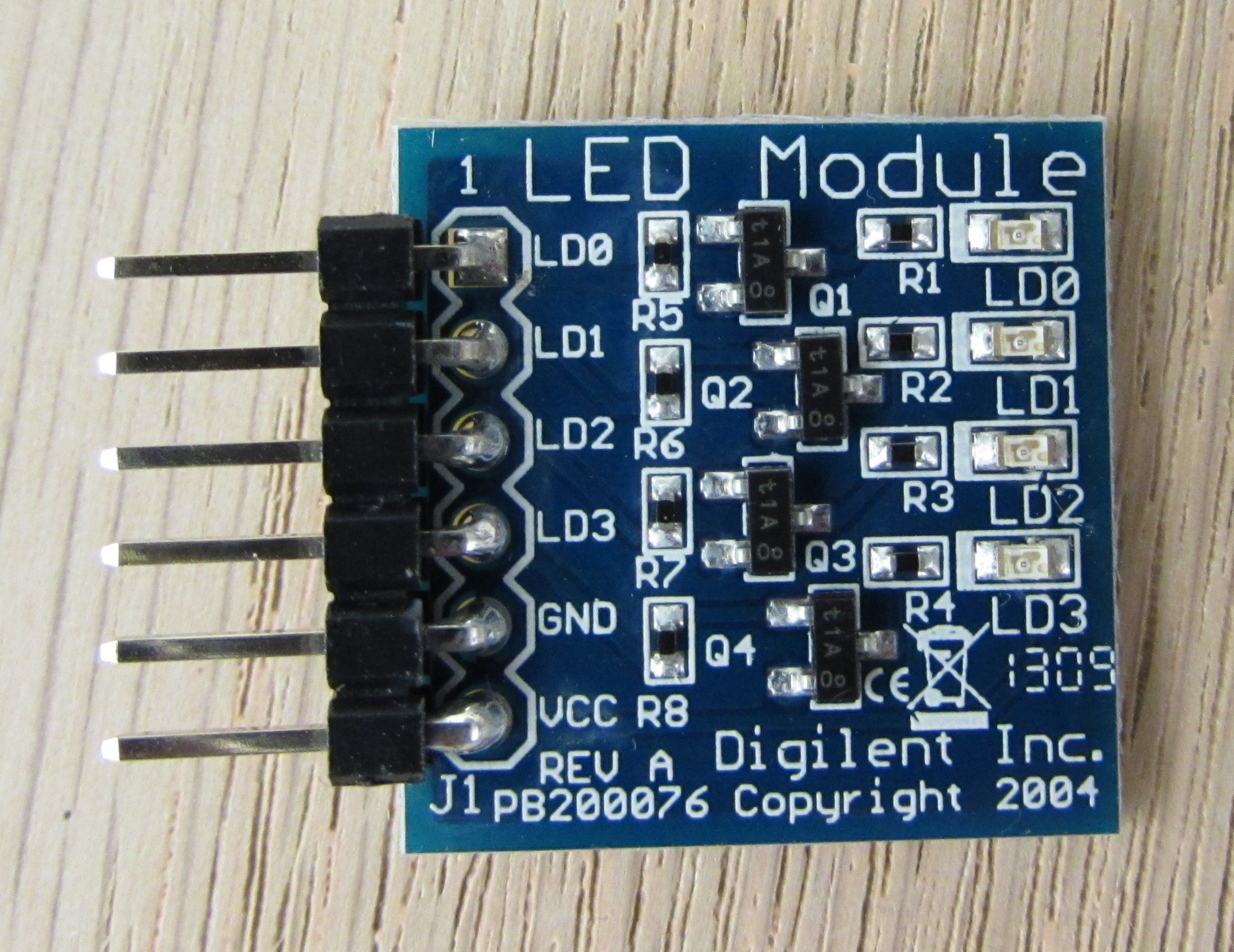Welcome back to the Digilent Blog!
As we continue on with our Pmod series featuring one of Digilent’s largest product lines, we find ourselves needing to see what’s going on inside of our microcontrollers and FPGAs as they race through their code at 80,000,000 times a second (or even faster!). Once again, Digilent has a variety of solutions to solve our dilemma. Our visual Pmods range from simple LEDs and a seven-segment display (SSD) to complex OLED and LCD screens.
We’ll start with the simpler of the visual Pmods and work our way up to the more refined Pmods. This leads us to Digilent’s two LED modules: the PmodLED and the Pmod8LD.


These two Pmods are a great way to visually show that a process is occurring at the appropriate time intervals or to confirm that interrupts or a shift register is working correctly. Both of these Pmods operate similarly, in that they only need a digital signal of 1 mA to be able to activate the BJT so that the LEDs are appropriately powered. Each of the LEDs has its own dedicated line on both the PmodLED and the Pmod8LD; as such, it is possible to turn on the LEDs individually or to turn on multiple LEDs simultaneously by providing the appropriate high or low digital signals to each of the four (or eight, in the case of the Pmod8LD) data lines.

The PmodSSD is not a solid-state drive, despite sharing the same acronym with it. Rather, it is a seven-segment display. The name of “seven-segment” comes from the fact that in the main portion of the digit, there are seven individual LED segments. (On nearly all seven-segment displays, though, there is an additional eighth segment that functions as a decimal point.)
So why doesn’t anybody call them “eight-segment displays”? I believe there are two reasons for this, although both are purely speculation. The first (and most likely) is the name of seven-segment display is so deeply ingrained in society that changing the name would simply not be a good idea in terms of fostering recognition. The other potential reason is that the corresponding acronym would be “ESD”, a scary thing in the electronics world and not something you would want your company to promote. Hence, the seven-segment name for the eight-segment device. Digilent’s two digit PmodSSD is a common cathode device. This means that each of the individual segments on a digit have their own line to receive positive voltage, but all eight of the segments are tied to the same cathode (ground) line.

The PmodCLS and PmodCLP are Digilent’s two LCD modules, and they both sport a 16 by 2 LCD character display. Both of these peripherial modules are flexible, in the fact that they are able to write and erase specific characters on the screen as well as being able to create and display a number of user-defined characters. This raises an important question–how are they different? These two modules are different in how they communicate, and after all, communication is key.
The PmodCLS is able to communicate in a serial fashion (one data bit at a time) using a variety of protocols, including SPI, TWI (a varient of I2C), and UART. The PmodCLP, on the other hand, only communicates in one fashion, GPIO, but does this in parallel (multiple data bits at the same time). What is even more interesting about the PmodCLP is the fact that it is one of the very few Pmods, along with the PmodSSD, that requires two separate connections to Pmod headers on the host board in order to operate correctly. This is due to its parallel nature; eight I/O pins are required for the parallel eight bits of data, and an additional three I/O pins are needed to give the appropriate commands to the LCD driver on the PmodCLS. Despite their potential to be quite complex, LCD screens are still used in a variety of applications, from calculator displays to some monitors, making the Pmods even more awesome.

And finally, we are at the PmodOLED. Although it is not the biggest Pmod available, this peripherial module is the most versatile display that Digilent offers. With its 128 by 32 pixel display and its easy to use library through SPI, nearly anything you like can be displayed on the screen, even one of Digilent’s logos.

Come back soon for more Pmod fun!


This is pretty cool design. Thank you for sharing.